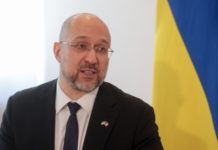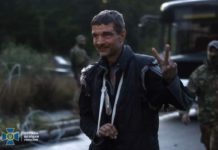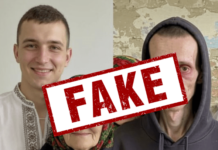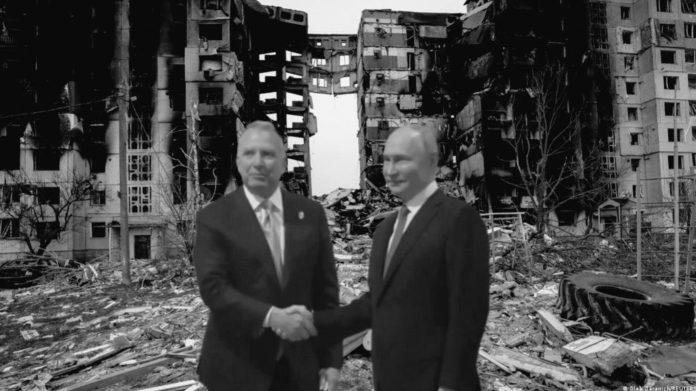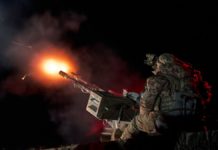Day 1144 of the war. As of April 12, 2025, the situation on the frontlines remains tense, with intense fighting continuing in the eastern and southern regions. Russian forces maintain offensive operations in several directions, yet the Ukrainian Armed Forces are effectively holding the line and inflicting significant losses on enemy manpower and equipment. On the international front, Ukraine is engaged in important diplomatic efforts ahead of the G7 summit, while partner nations prepare new packages of military aid.
Frontline Situation
In the past 24 hours, 72 combat engagements were recorded. The fiercest fighting continues on the Avdiivka, Marinka, Bakhmut, and Kupiansk axes. Russian forces are concentrating efforts to breach Ukrainian defenses in Donetsk Oblast while intensifying activity in the Zaporizhzhia and Kharkiv regions.
- Avdiivka sector: Over 15 attacks were repelled near Novokalynove, Orlivka, Sieverne, Pervomaiske, and Nevelske. Russian forces used assault infantry and armored vehicles but were driven back.
- Marinka sector: At least 20 clashes occurred near Krasnohorivka and Novomykhailivka. Ukrainian troops held their positions using artillery and FPV drones.
- Bakhmut sector: Russian assaults near Bohdanivka, Khromove, Klishchiivka, and Andriivka failed, with the enemy sustaining losses and retreating.
- Kupiansk sector: Assaults near Synkivka, Ivanivka, and Kyslivka were stopped by Ukrainian drone and artillery strikes.
- Zaporizhzhia sector: Russian forces attempted reconnaissance-in-force near Robotyne and Verbove but were forced to withdraw.
Ukrainian defenders continue to use precision artillery, strike drones, and mobile fire teams to destroy enemy supply depots and frontline equipment.
Russian Losses
According to the General Staff of the Armed Forces of Ukraine as of the morning of April 12, 2025, the total Russian combat losses since the start of the full-scale invasion amount to:
- Personnel — approximately 931,450 (+1,240 in the past 24 hours)
- Tanks — 10,591 (+11)
- Armored combat vehicles — 22,055 (+7)
- Artillery systems — 26,092 (+49)
- MLRS — 1,362 (+2)
- Air defense systems — 1,127 (unchanged)
- Aircraft — 370 (unchanged)
- Helicopters — 335 (unchanged)
- Tactical UAVs — 32,278 (+78)
- Cruise missiles — 3,145 (unchanged)
- Ships/boats — 28 (unchanged)
- Submarines — 1 (unchanged)
- Vehicles and fuel tanks — 43,807 (+128)
- Special equipment — 3,798 (unchanged)
These figures highlight the sustained pressure exerted by Ukrainian forces on Russian troops, particularly in counter-battery operations and drone warfare.
Ukrainian Strikes and Achievements
The Ukrainian Armed Forces continue to conduct offensive and counter-battery operations, targeting key Russian assets and command infrastructure.
- In Donetsk Oblast, Ukrainian air forces destroyed an ammunition depot near Staromlynivka.
- Ukrainian special operations forces struck a mobile Russian command post in Luhansk region.
- Artillery units on the southern front eliminated a Grad MLRS battery and two armored vehicles.
- The General Staff confirmed effective use of domestically produced loitering munitions against Russian fuel storage sites in rear areas.
These precision strikes degrade Russian logistics and battlefield coordination, undermining offensive capabilities.
Diplomatic Initiatives and Negotiations
During April 11–12, Ukraine focused on strengthening diplomatic coalitions and economic partnerships to secure long-term support.
- In Washington, technical consultations began on a US-Ukraine agreement concerning mineral resources. The Ukrainian delegation, led by deputy ministers of economy and justice, discussed investment guarantees and strategic control provisions.
- French President Emmanuel Macron proposed the creation of an international tribunal for Russian war crimes and reiterated support for the Swiss-hosted peace summit.
- According to international media including Reuters and Bloomberg, discussions intensified around organizing the Swiss-hosted global peace summit in June, with Kyiv pushing for wider participation by Global South countries. Western allies expressed concern over reluctance by some nations to join without Russia’s participation, prompting intensified outreach by Ukrainian diplomats.
- On April 11, Russian President Vladimir Putin held a formal meeting with Stephen Vítkov, an adviser to U.S. President Donald Trump and a known pro-Kremlin lobbyist. According to Reuters, the meeting lasted over four hours and focused on potential political and economic arrangements related to ending the war in Ukraine. The Kremlin framed the event as part of its effort to engage with Western political figures, while critics in the U.S. and Europe denounced it as an attempt to sow division and lend legitimacy to Moscow’s narrative ahead of the Swiss peace summit.
- Poland announced plans to host a security guarantees conference for Ukraine in Warsaw this June.
- Turkey affirmed its support for humanitarian initiatives, including the return of deported Ukrainian children and further cooperation on Black Sea grain exports.
These diplomatic steps underline Ukraine’s proactive strategy in reinforcing international coalitions and preparing the ground for legal accountability of Russia, while Russia seeks to fragment European consensus through outreach to marginal pro-Kremlin figures.
International Support for Ukraine
Between April 11 and 12, international partners reaffirmed broad and practical support for Ukraine’s defense and civilian resilience.
- United States: Announced a $1.5 billion assistance package including NASAMS air defense systems, 155mm artillery shells, kamikaze drones, and spare parts for armored vehicles.
- United Kingdom: Delivered additional armored vehicles, NLAW anti-tank systems, helmets, and body armor.
- Japan: Allocated $400 million for infrastructure recovery and support for internally displaced persons.
- Canada: Provided demining equipment, reconnaissance drones, and extended the Ukrainian sapper training program.
- Lithuania: Transferred three air surveillance radars, a mobile hospital, and generators for liberated communities.
This aid further enhances Ukraine’s battlefield effectiveness and strategic sustainability.
Humanitarian Situation in Ukraine
Russian attacks continued to affect civilians in multiple regions.
- In Dnipro, a missile strike killed three civilians and injured eleven, damaging a residential building.
- In Kharkiv, drone attacks hit a thermal power plant, disrupting services.
- In Chasiv Yar (Donetsk region), shelling damaged a school and a medical center.
- In Kherson, artillery fire from the left bank of the Dnipro struck a hospital and water infrastructure.
Despite the risks, humanitarian organizations including the UN, Red Cross, and Doctors Without Borders continue delivering aid to de-occupied territories.
Domestic Situation in Ukraine
Ukraine’s internal policies remain focused on resilience, veteran care, and institutional stability.
- The Ukrainian Parliament passed a reintegration bill for veterans featuring nationwide psychological support programs.
- The government introduced a digital education model for service members to receive civilian qualifications.
- The Ministry of Health opened rehabilitation centers for veterans in five regions.
- The Ministry of Economy reported a 1.8% GDP growth for Q1 2025.
- Security services detained a criminal group in Odesa that organized illegal border crossings under the guise of humanitarian missions.
These developments indicate sustained institutional adaptation to the prolonged conflict.
Conclusion
As of April 12, 2025, Ukraine demonstrates resilience across all strategic fronts. On the battlefield, the Armed Forces of Ukraine are effectively repelling Russian assaults and degrading enemy capabilities through precision strikes. Diplomatically, Ukraine is reinforcing global coalitions ahead of the Swiss peace summit and actively working to engage countries from the Global South despite Russia’s attempts to disrupt international alignment. International military and humanitarian assistance remains robust, while domestically, Ukraine continues to implement critical reforms aimed at supporting veterans, strengthening institutional stability, and maintaining economic growth. These developments collectively reflect Ukraine’s determination and ability to sustain its defense and sovereignty in the face of continued aggression.
🤝 SUPPORT US 💙💛
We continue to work only because you read and support us. If you appreciate what we do, please become our sponsor or donate here👇
☕️ buymeacoffee.com/meaninuak
or
☑️ patreon.com/MeanwhileinUkraine
Your support helps us continue delivering timely and accurate updates. Stay informed and stand with Ukraine! 🇺🇦
Together we are stronger! 🇺🇦




